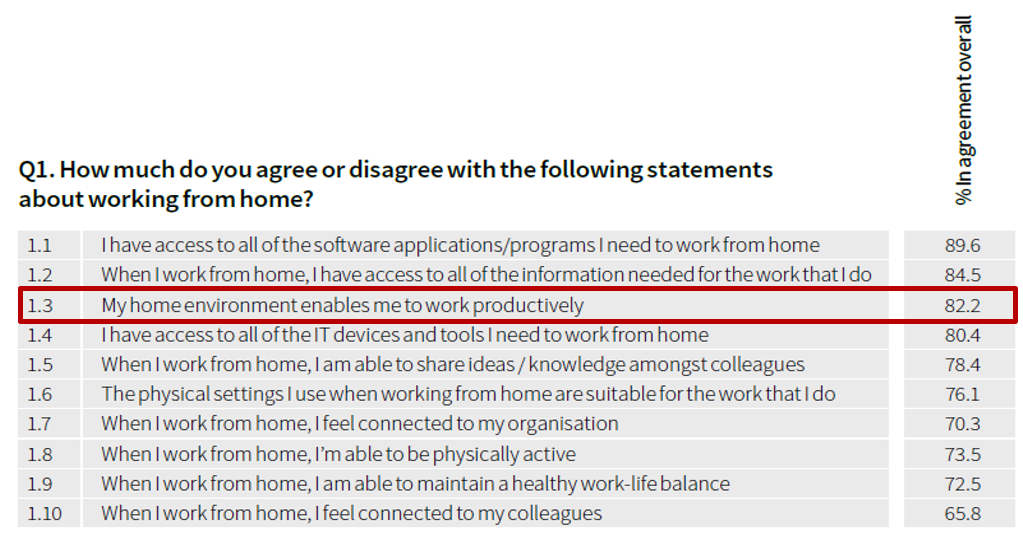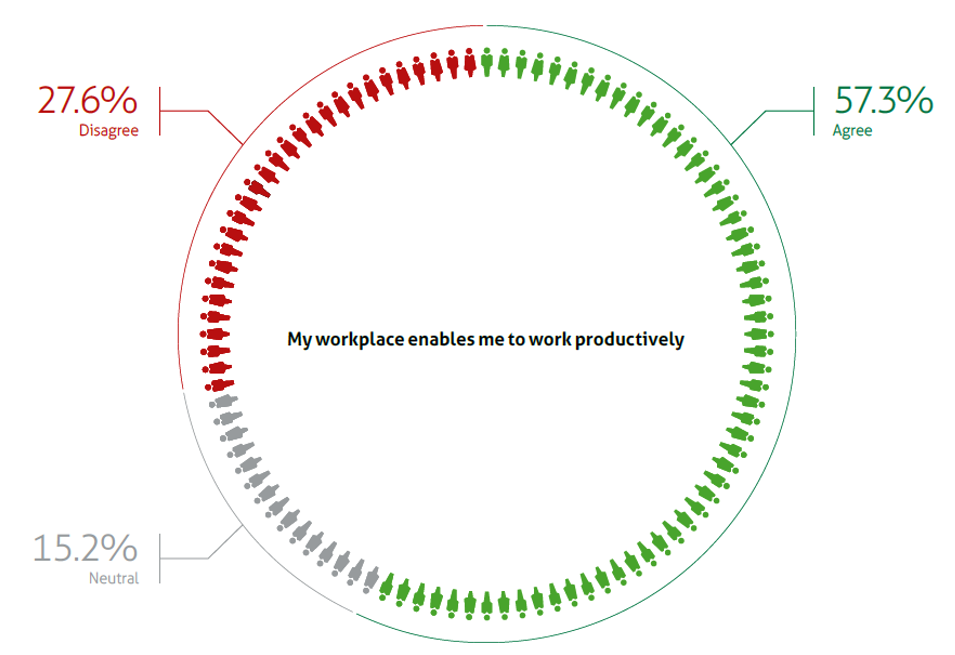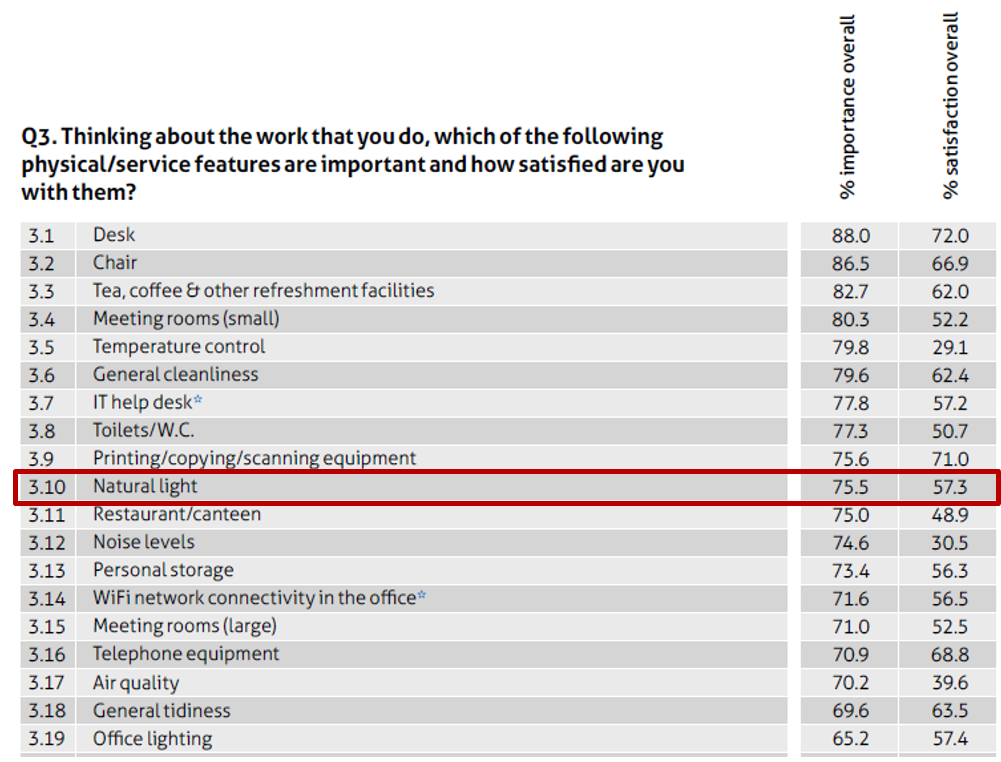Home v Office: Workspace Comfort & Performance | SageGlass

The coronavirus crisis has brought about massive changes in the way we work. In particular, remote work has gained importance, and is set to double from an average of 1.2 days per week pre-pandemic to 2.4 days per week post-pandemic (JLL). So how does the home workspace stack up? Is it more comfortable? Do employees feel more efficient and productive at home? Will remote work become the new normal? We looked at some recent studies that help answer these questions.
Better Productivity at Home
A study of more than 40,000 employees working remotely showed that they can be just as (if not more) productive when working from home compared to the office—particularly when it comes to focusing on individual tasks (Cushman & Wakefield). In a different study of 126,969 employees working remotely, 82.2% of respondents confirmed that the working environment at home allowed them to work productively (Leesman). Yet a similar study conducted on 276,422 employees in traditional offices in 2018 showed that only 57.3% of respondents felt that working in the office allowed them to be productive (Leesman).

Source: The Homeworking Impact Code, Leesman, August 2020

Source: The Next 250k, Leesman, 2018
A 2017 study of 7,000 office workers revealed a similar trend: 50% of those surveyed responded that their working environment didn’t allow them to work efficiently (JLL).
While working remotely certainly isn’t all rosy, these survey results say a lot about the gap between the principal aim of offices—to be a welcoming place where employees can perform their tasks efficiently—and the reality.
Environment Matters
The conditions of the work environment (like air quality, acoustics, natural light, connection to nature, and thermal comfort) are important. They affect workers’ wellbeing, physical and mental health, and performance. In the office, employees attach a great deal of importance to their physical environment (Leesman). However, the same study shows their expectations usually aren’t met. For example, almost half of respondents said they were unsatisfied with their access to natural light.

Source: The Next 250k, Leesman, 2018
Will Offices Disappear?
There are many reasons we might see the trend toward remote work continue: uncomfortable offices; more commuting time; increased health risks; difficult work-life balance; more stress—and the list goes on.
But recent studies have also shown that there can be disadvantages to working remotely, too. Those might include lack of human interaction, lack of connection with colleagues and the organization, and the absence of a boundary between work and home life. Studies also show that not all employees have the ability to work from home in favorable conditions, and that some are eager to work exclusively from the office (in particular, younger workers) (JLL).
Still, the majority of employees surveyed want to be able to continue working remotely on a regular basis (JLL). Thus, it’s likely that our future way of working will be a hybrid model: sometimes working from home to focus on individual tasks, and sometimes heading to the office to build social connections and collaborate with colleagues, or to resolve complex problems. In all circumstances, companies must prioritize the health and wellbeing of their employees.
The Evolution of the Office Space
Businesses are increasingly focused on quality of life at work, based on the idea that happier employees work better. But the coronavirus crisis has reinforced the importance of the physical environment and poses an additional challenge: now that remote work is common, how can companies encourage their employees to return to the office, in order to maintain their commitment and sense of belonging, and to promote informal interaction, creativity, and innovation?
One solution is to offer outstanding office spaces and an experience that’s different from the home workspace. The quality of the interior physical environment can no longer be overlooked. High air quality is crucial, of course, as are optimum natural light and views of the outdoors (JLL; Cushman & Wakefield). Buildings should also limit noise disruption, and heat discomfort in summer. This goes for all workspaces—not just individual offices, but also meeting rooms, breakout spaces, cafeterias, and so on.
What’s Next?
While employees have enjoyed a certain level of comfort working from home, many also want to return to the office for the social connections it provides. And employers have realized the importance of the quality of their indoor spaces.
Sources:
- Reimagining Human Experience, JLL, November 2020
- The future of workplace: how will COVID-19 and data shape the new workplace ecosystem? Cushman & Wakefield, 2020
- The Homeworking Impact Code, Leesman, August 2020
- The Next 250k, Leesman, 2018
- Workplace Powered by Human Experience, JLL, 2017
- The future of global office demand, JLL, June 2020
- Do amenities still matter in a post COVID-19 world? Cushman & Wakefield, November 2020